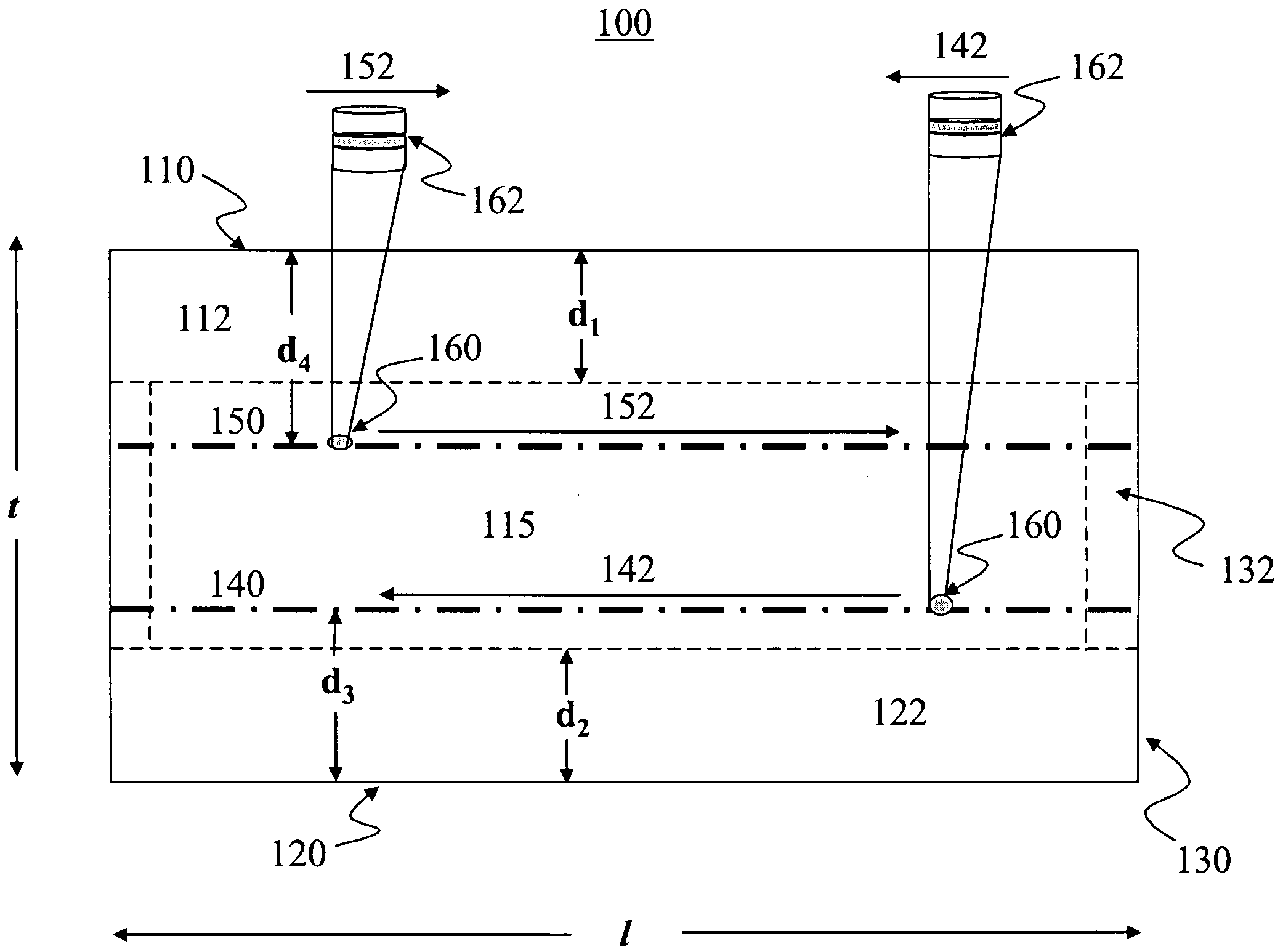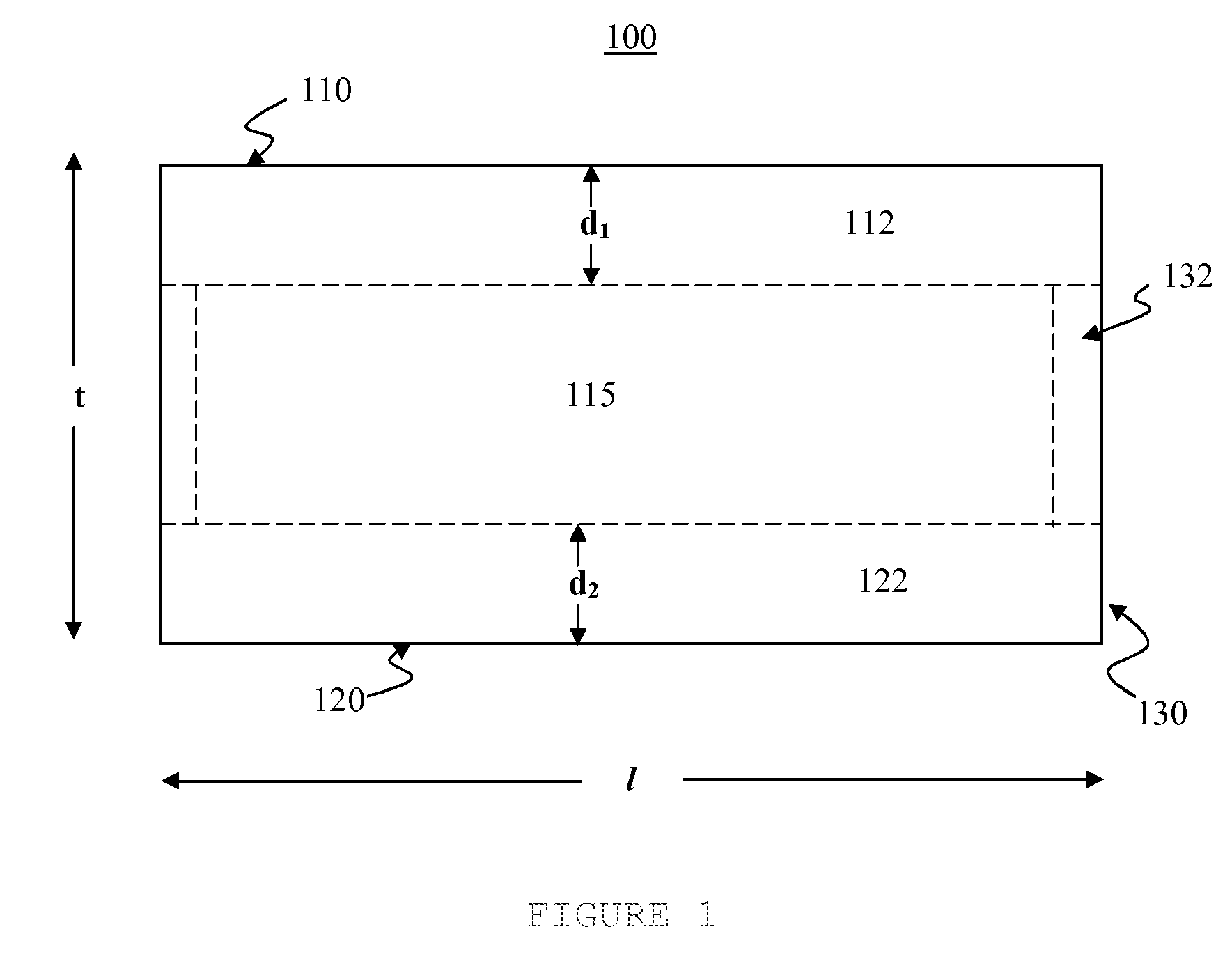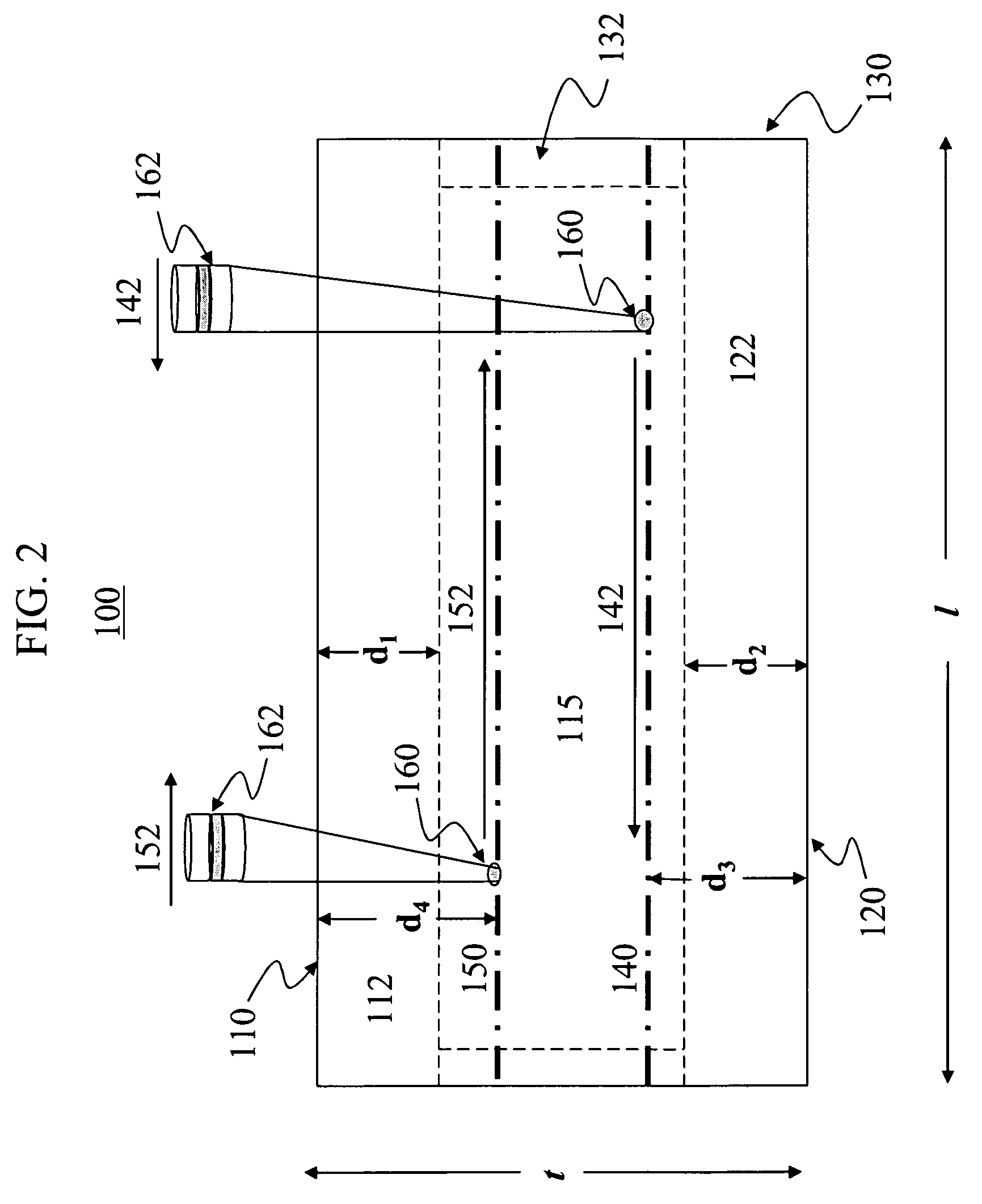Method of separating strengthened glass
a technology of tempered glass and strengthened glass, which is applied in the direction of identification means, glass tempering apparatus, instruments, etc., can solve the problems of difficult, if not impossible, to cut or separate glass that is either tempered or chemically strengthened into desired shapes and/or sizes, sample usually breaks into multiple pieces, and conventional score-and-break techniques do not work. , to achieve the effect of high speed and minimal damag
- Summary
- Abstract
- Description
- Claims
- Application Information
AI Technical Summary
Benefits of technology
Problems solved by technology
Method used
Image
Examples
example 1
[0038]A glass sample having the composition 66.7 mol % SiO2; 10.5 mol % Al2O3; 0.64 mol % B2O3; 13.8 mol % Na2O; 2.06 mol % K2O; 5.50 mol % MgO; 0.46 mol % CaO; 0.01 mol % ZrO2; 0.34 mol % As2O3; and 0.007 mol % Fe2O3 underwent ion-exchange by immersion in a molten KNO3 bath for seven hours at 410° C. The resulting thickness of the ion-exchanged layer on the surface of the glass was about 50 μm.
[0039]The glass sample was mounted on a computer-controlled XYZ stage and was translated at speeds ranging from 30 mm / s to 300 mm / s. The output from a 355-nm nanosecond Nd-YAG laser was first focused 50-100 μm above the rear surface (i.e., the surface of the glass farthest from the laser; e.g., second surface 120 in FIGS. 1 and 2) with a 0.27-NA lens into a spot 1-3 μm in diameter. The mean power of the laser beam was 1 W, and the repetition rate was 150 kHz. After the first damage line was written near the rear surface, the beam was refocused about the same distance below the front surface (...
PUM
| Property | Measurement | Unit |
|---|---|---|
| mol % | aaaaa | aaaaa |
| mol % | aaaaa | aaaaa |
| depth | aaaaa | aaaaa |
Abstract
Description
Claims
Application Information
 Login to View More
Login to View More - R&D
- Intellectual Property
- Life Sciences
- Materials
- Tech Scout
- Unparalleled Data Quality
- Higher Quality Content
- 60% Fewer Hallucinations
Browse by: Latest US Patents, China's latest patents, Technical Efficacy Thesaurus, Application Domain, Technology Topic, Popular Technical Reports.
© 2025 PatSnap. All rights reserved.Legal|Privacy policy|Modern Slavery Act Transparency Statement|Sitemap|About US| Contact US: help@patsnap.com



